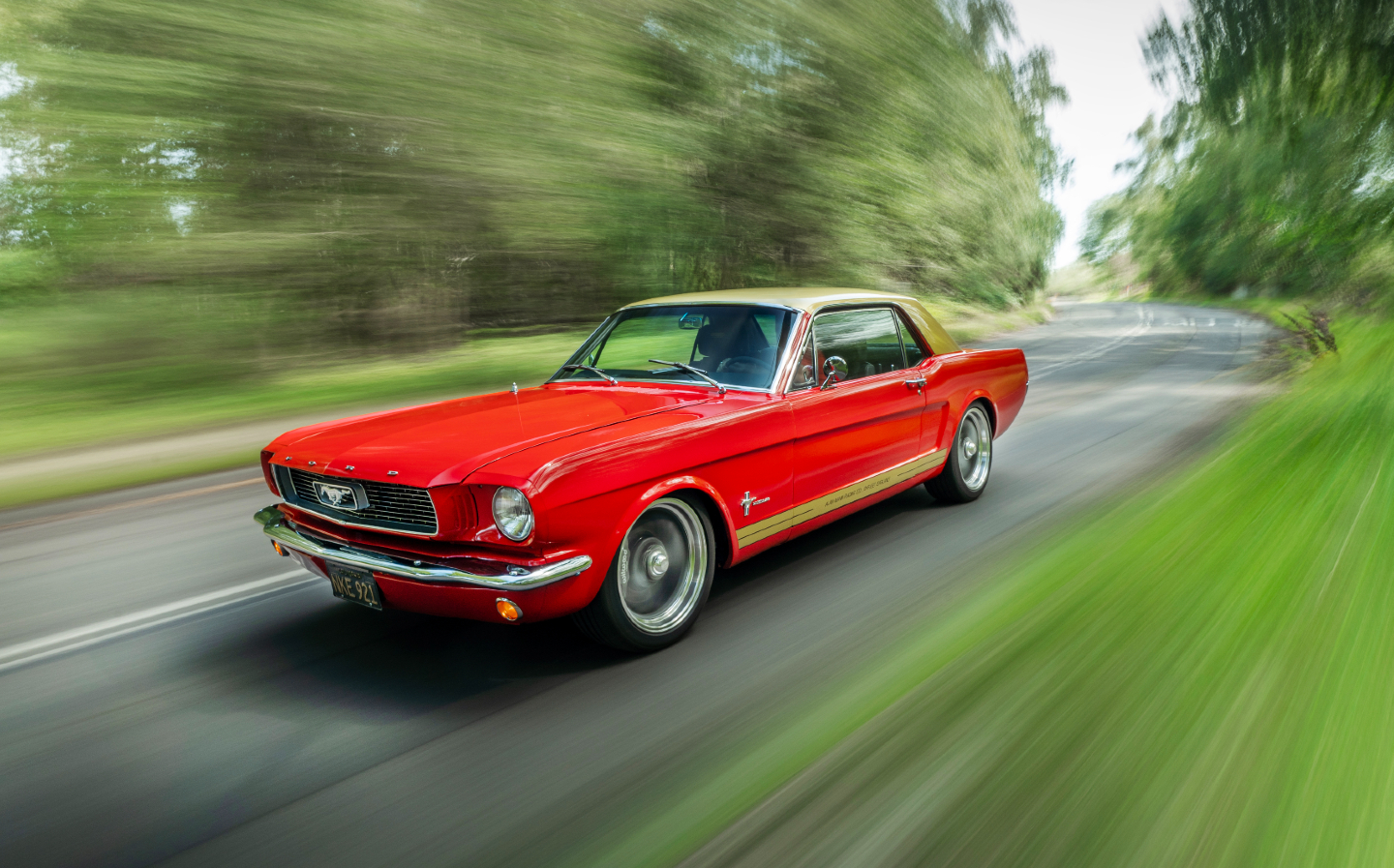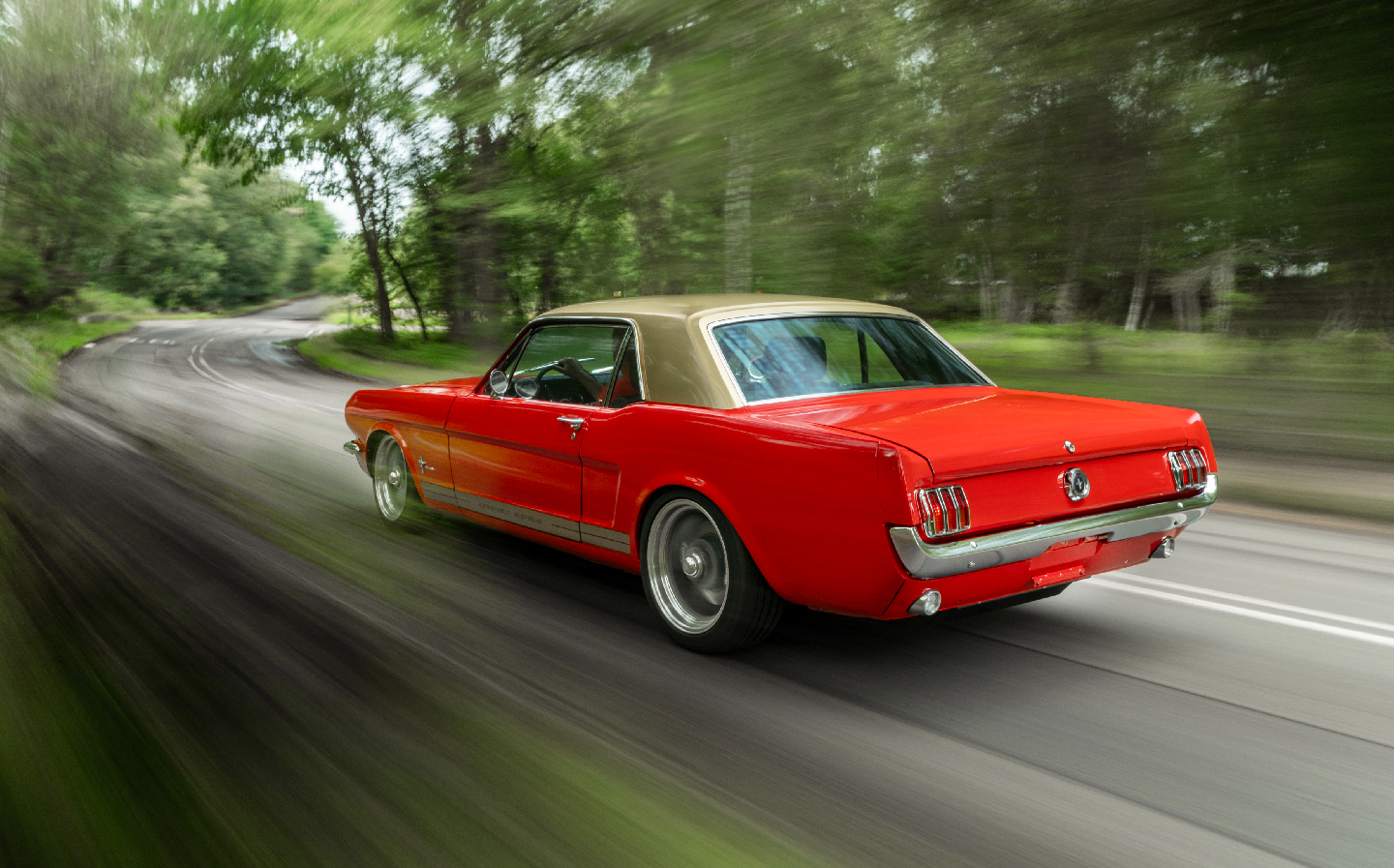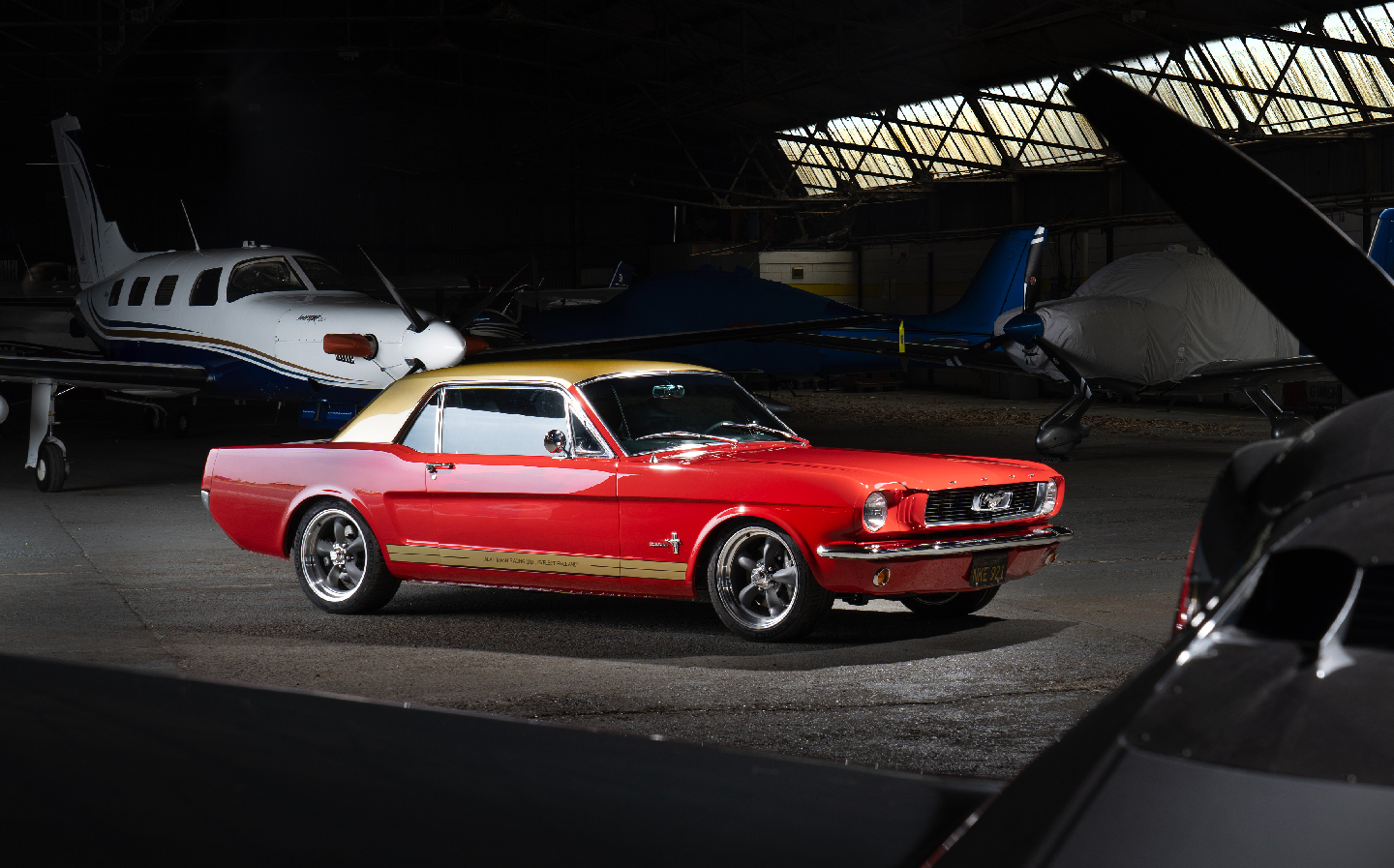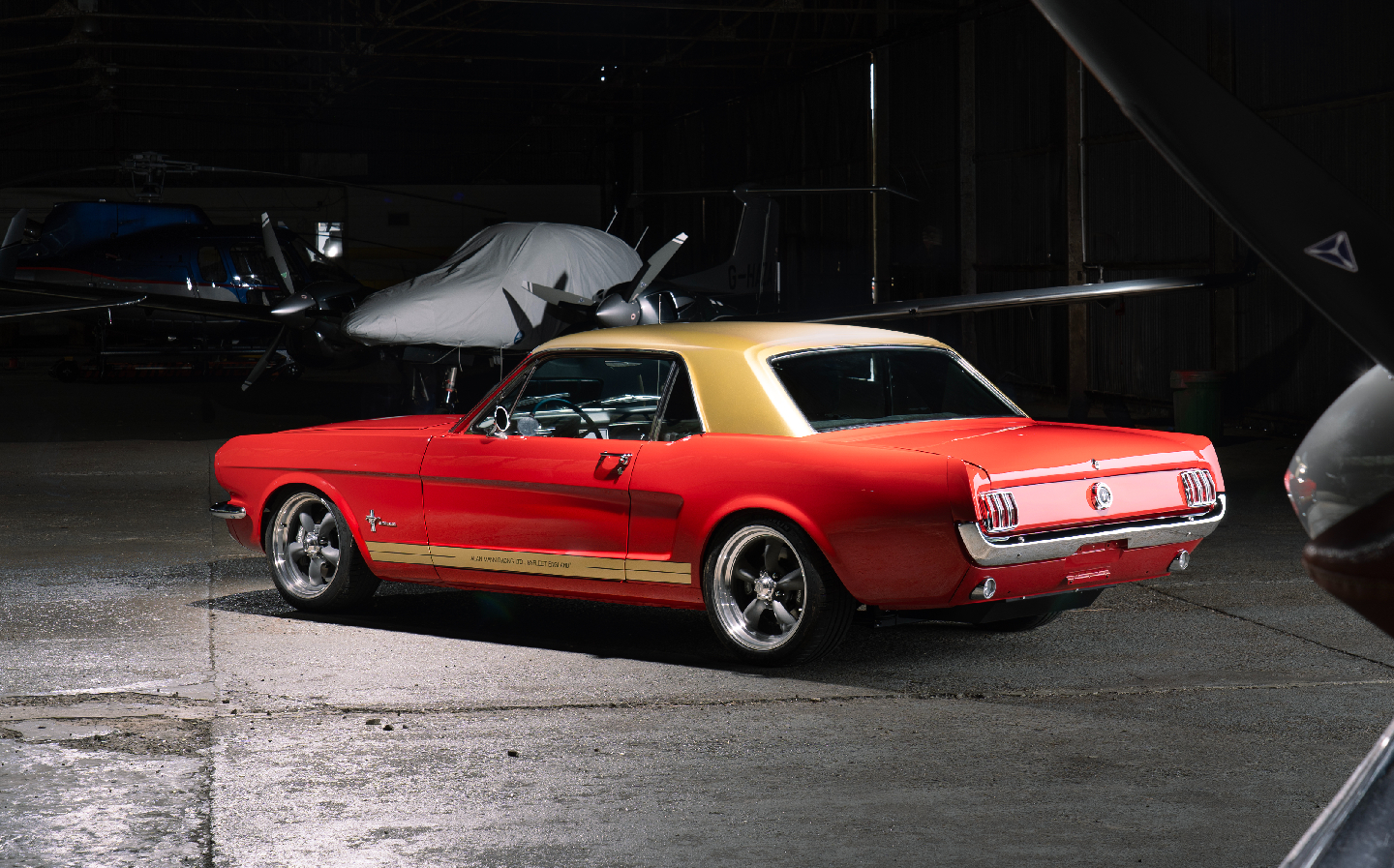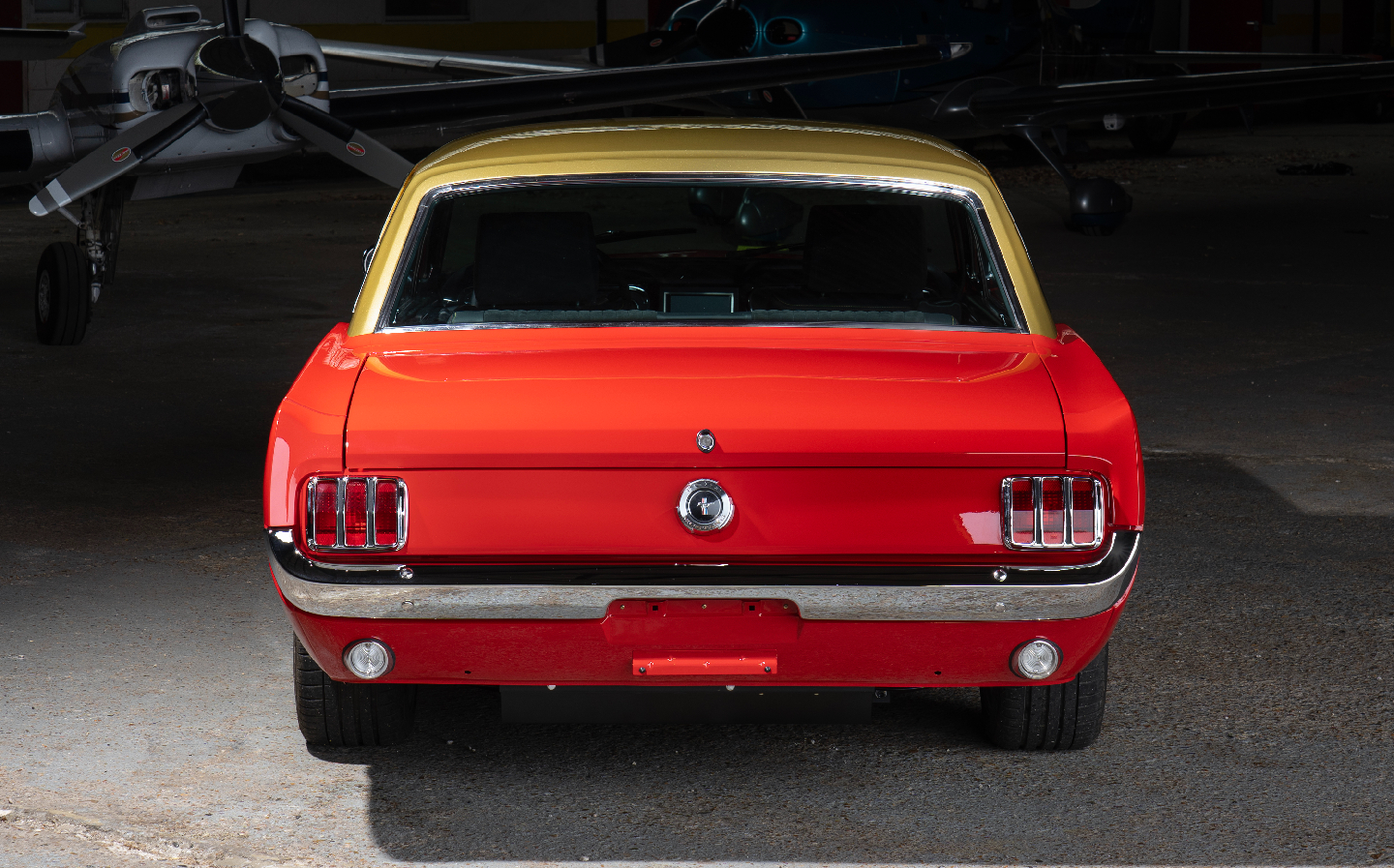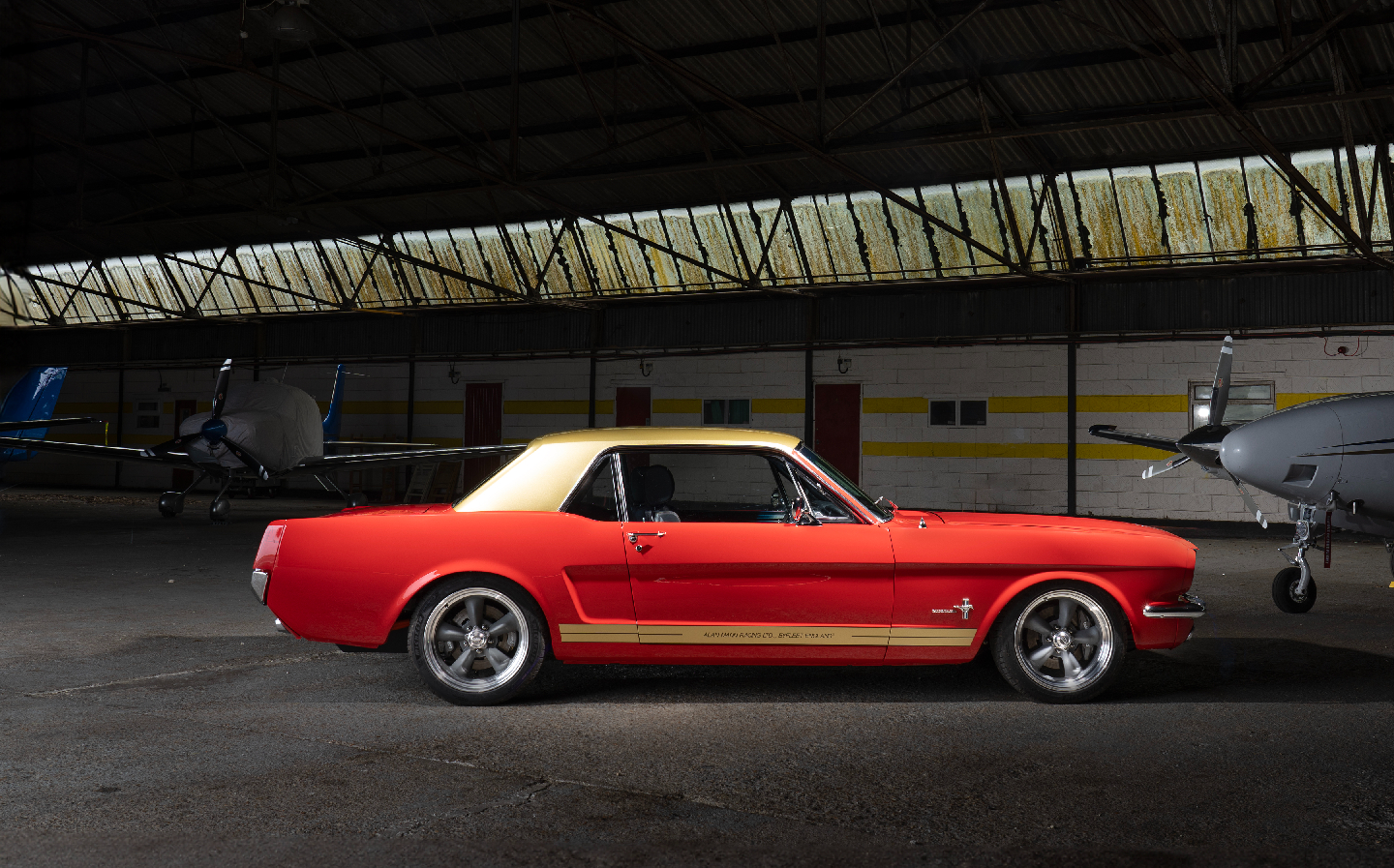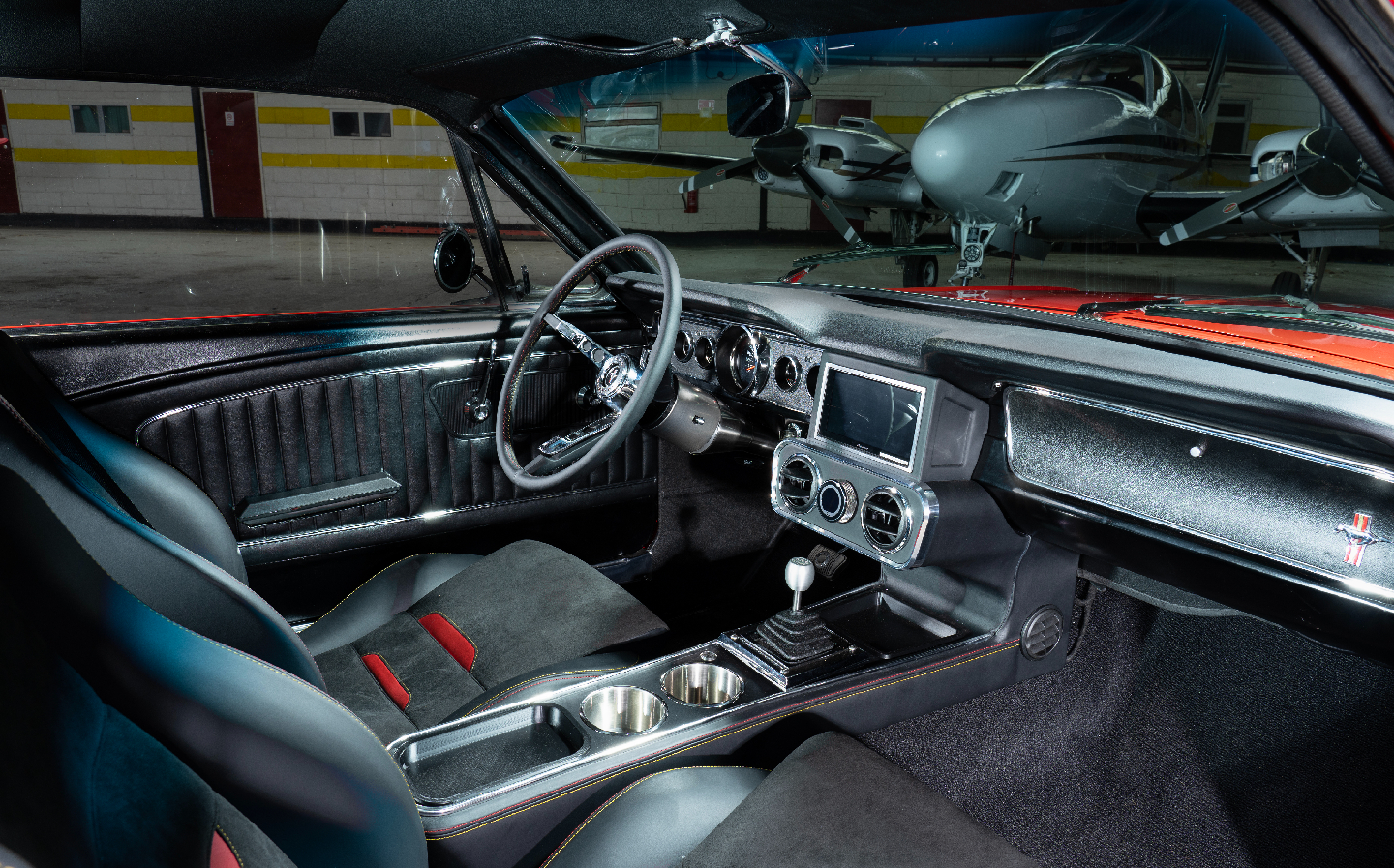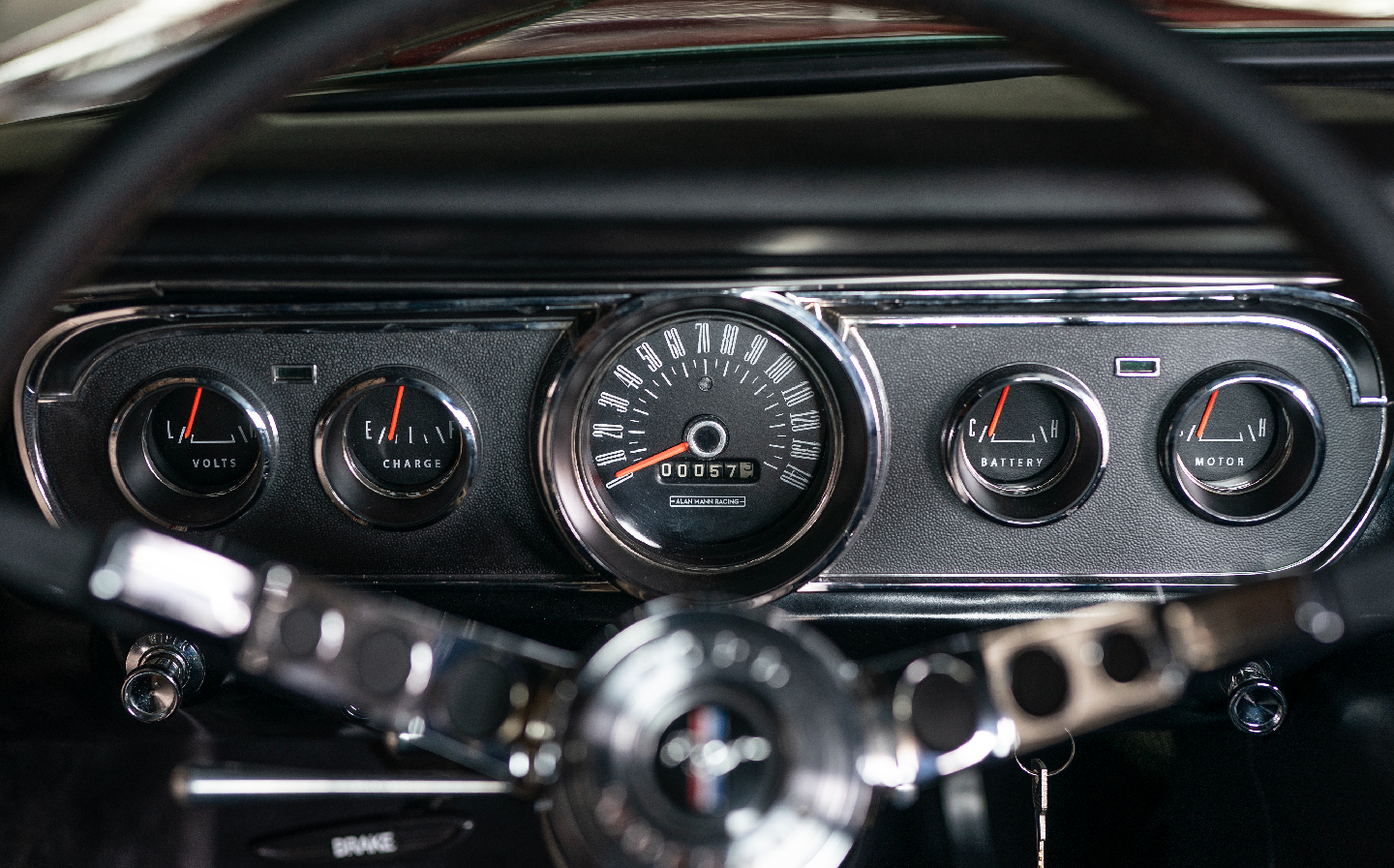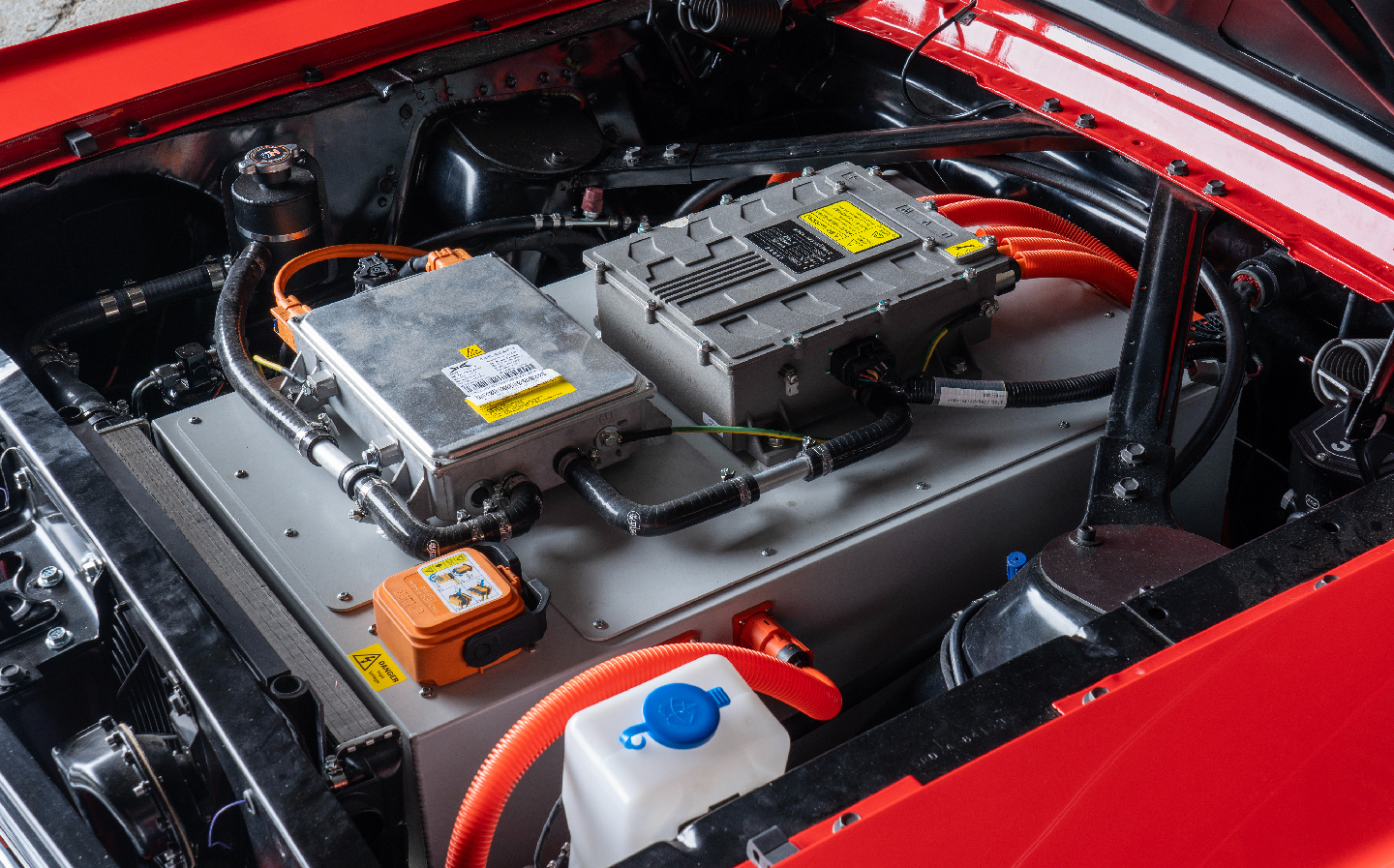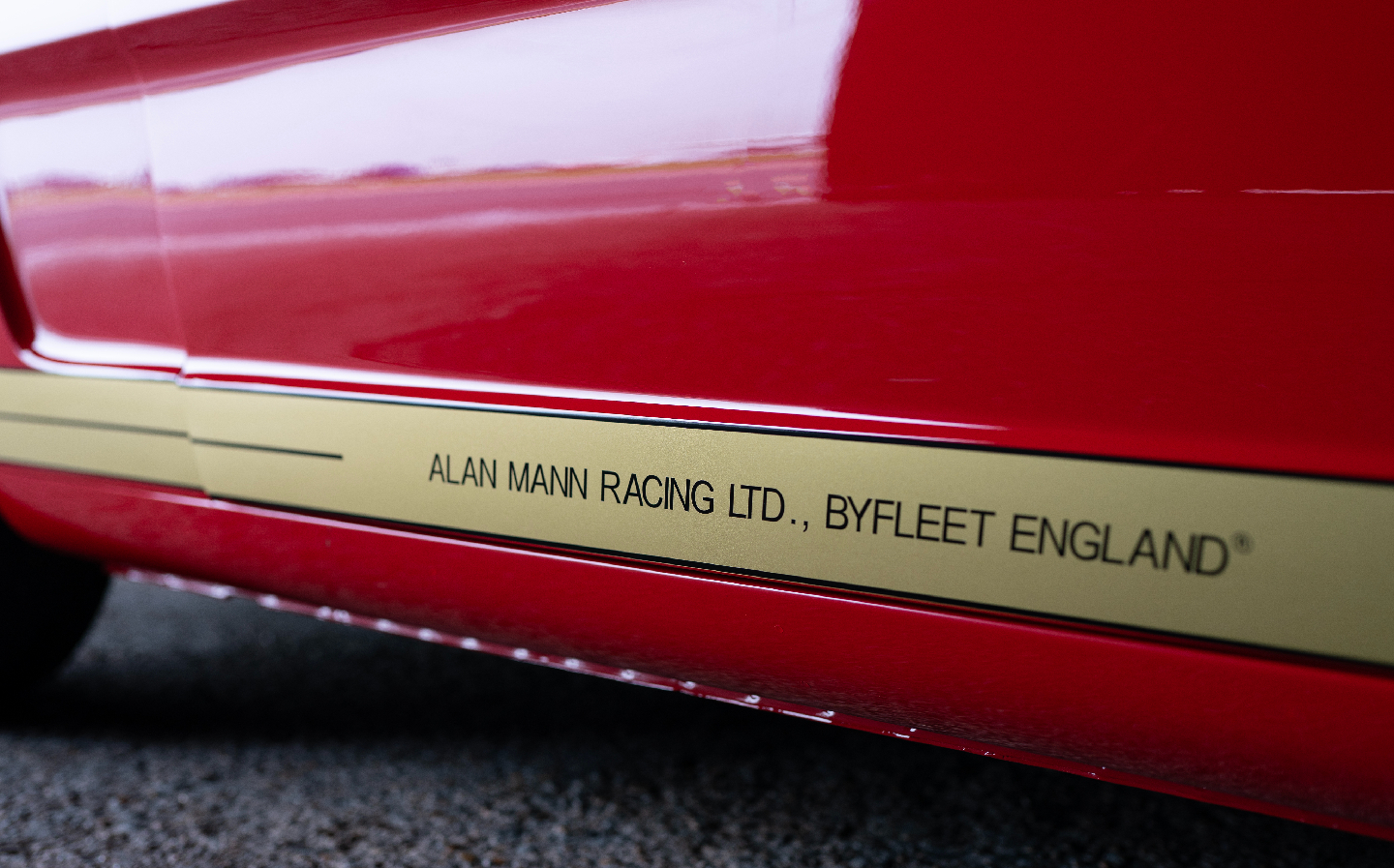AMR Mustang ePower review: The 1960s restomod Pony car powered by volts rather than a V8
Oh, Mann, this is going to cause a stir
I’ve never watched an episode of Keeping up with the Kardashians, but nobody could have escaped the fact that the reality show existed. I’m aware of someone from the Kardashian clan called Kim, who may or may not be married to a mad rapper, and that there is a matriarch called Caitlyn who used to go by the name Bruce. I have no feelings at all about the programme, or Caitlyn, though I know other people have rather extreme opinions about both.
Similarly, I have no strong feelings either way about cars that were born to run on petrol but have subsequently been converted to run on electricity.
I am also not bothered at all that Alan Mann Racing (AMR) — a team that was contracted by Ford in the 1960s and prepared race-winning Cortinas and Falcons, and even a lightweight GT40 during the famous Le Mans push — has started taking a knife to original Mustangs, removing their combustion engines and replacing them with electric motors. But I know that some of you will be outraged.
Even Henry Mann (below), son of the legendary Alan Mann and director of Alan Mann Racing, acknowledges that his clients are split 50:50 on the issue: half find it sacrilegious to have a Mustang without a V8 in it, and aren’t at all behind electric cars in general, while the other half have been “very receptive” to his new AMR ePower Mustang. A couple have even driven the near-production prototype I got to try out.
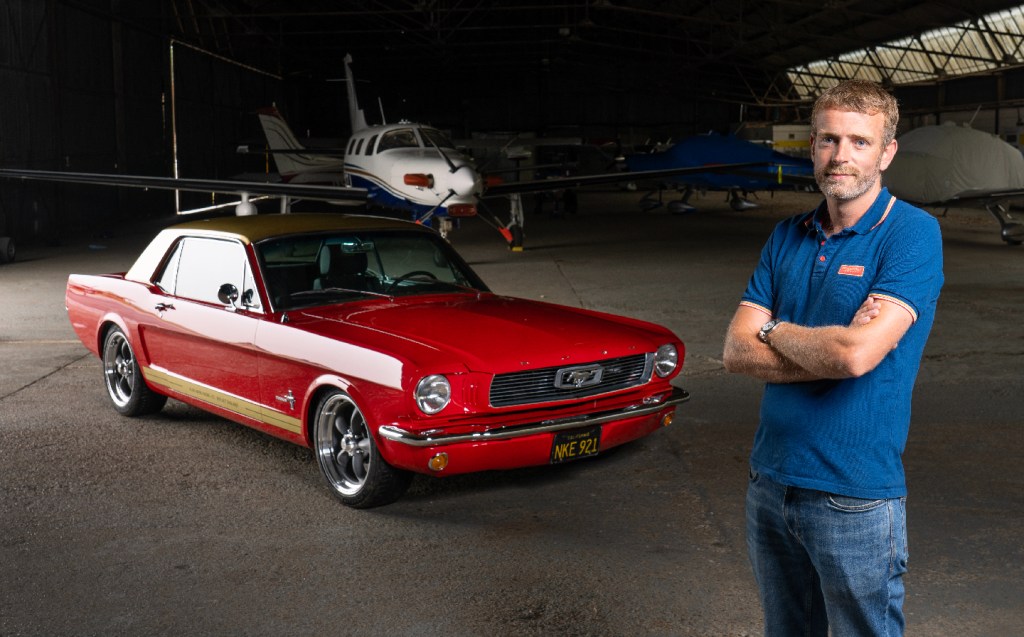
Stripped and rebuilt from the ground up
So what exactly has AMR done? Well, a lot. Way more than other classic car converters such as Electrogenic or Lunaz would attempt. Those guys try to keep as much original as possible, and Electrogenic even specialises in keeping the gearbox as part of the electric drivetrain (due to the immediate torque from an electric motor, you can start off in pretty much any gear, with first used exclusively for burnouts).
But the AMR ePower Mustang is first and foremost a restomod, so it’s heavily updated to include modern parts, inside the cabin and under the bonnet, which most obviously involves fitting the electric motor, but also stripping out the transmission, adding more supportive seats and luxuries such as air conditioning and a touchscreen infotainment system.
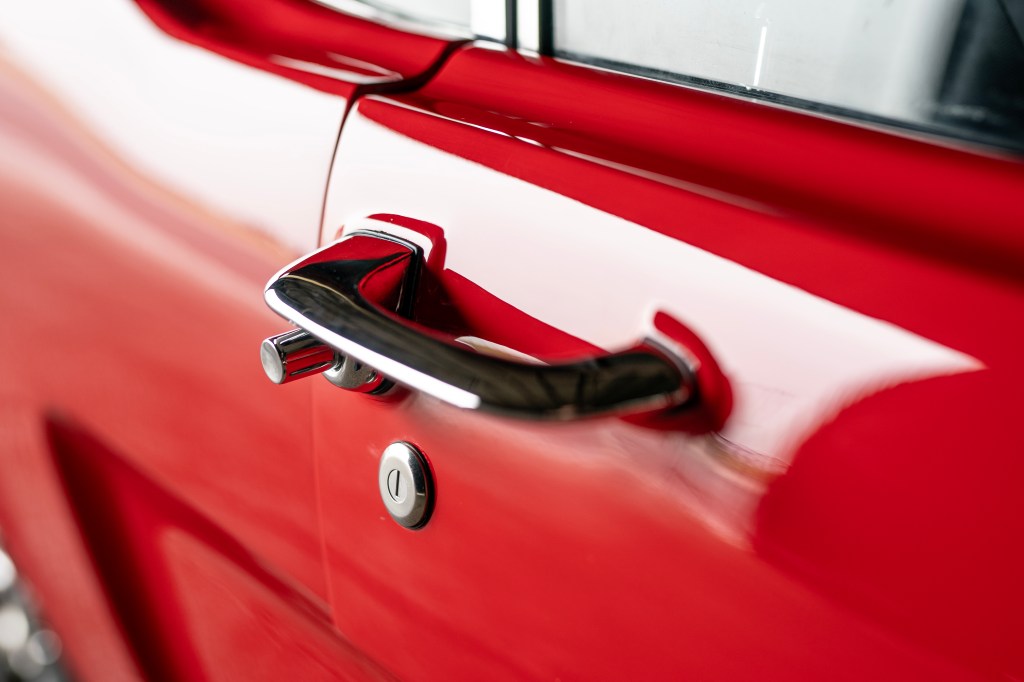
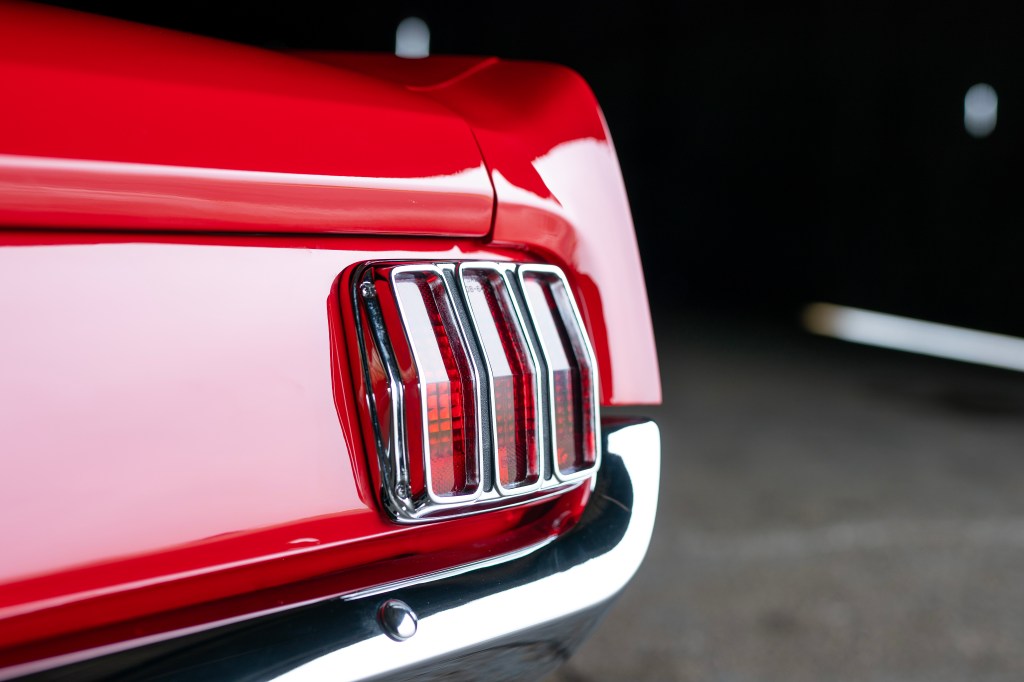
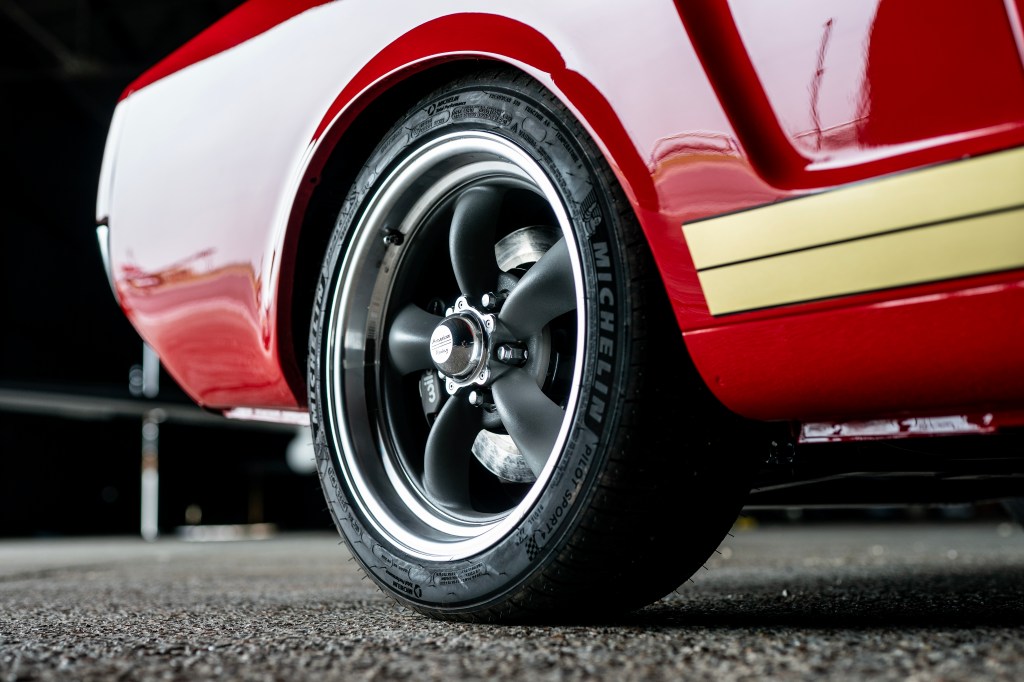
New front and rear subframes were designed to accommodate the electrical components, with the battery pack split in two — one under the bonnet and one below the boot floor, replacing the fuel tank. That ensures an even weight distribution, Mann says.
And despite the dense powerpacks, overall weight isn’t massively increased over the original — up around 100kg or so — because removing the engine and gearbox alone sheds 285kg, and the electric motor and reduction box are lighter than the original gearbox alone.
There’s further weight-saving in the uprated suspension and brakes, too. The forged steel front units and rear leaf springs have been replaced with lightweight aluminium independent double wishbones all round, featuring billet aluminium uprights, while stopping power comes from lightweight ventilated front and rear discs, with six-piston callipers in front and four-piston callipers behind.
Bad news for Brits
The problem with what AMR has done, though, is that it goes way beyond what the UK’s Driver and Vehicle Standards Agency (DVSA) views as “radically altered”. That means the car can’t keep its original registration number in the UK so it needs to be tested for safety by the DVSA, which in turn means paying a fee for a person with a clipboard and a stern look to spend a couple of hours poring over each car to roll out of the workshop. And AMR isn’t considering that right now (though if Mann’s phone rings off the hook with UK orders, his arm could be twisted).
Instead, initial AMR ePower Mustangs are destined for foreign markets — mainly America, where classic Mustangs are more common and the regulations are more relaxed, particularly in certain States.
It’s handy, then, that AMR has partnered with an engineering firm in the USA — Mann ePower Cars, based just outside Philadelphia — to do the restoration and conversion work to its specifications.
You might have noticed that both firms contain the name Mann; that’s a coincidence, apparently. AMR’s Henry Mann met his American namesake at a car show in Chicago, and the two decided there and then that their combined engineering expertise and experience of Fords could result in a pretty decent electric restomod.
It’s what’s inside that counts
How decent? Well, the signs from my test drive are promising. While Brits will find it harder to get behind the wheel due to the extensive modification and the DVSA’s draconian regulations, the updates are to the benefit of owners: the AMR ePower Mustang is in many ways — objectively speaking — better to drive and sit in than the original machine.
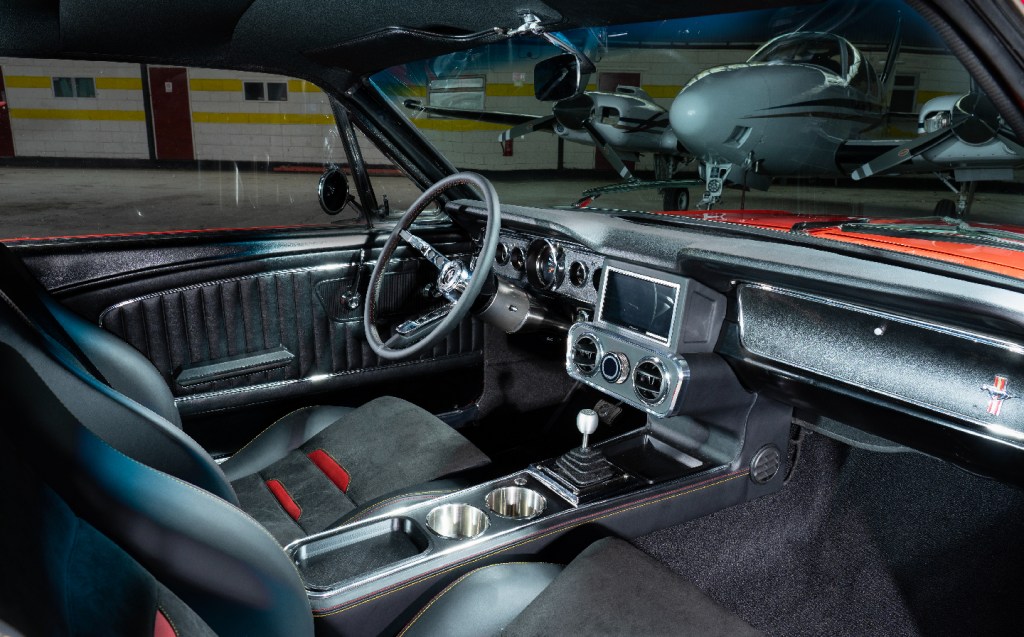
Let’s start with the front seats, which are so much more supportive than the originals, and mercifully add headrests. There’s no B-pillar to which AMR could fit belts, even on the coupes and fastbacks, so the new seats also include modern inertia-reel three-point seatbelts. Though the perches are fixed solidly to the floor, they’re on runners, which means you can slide them forward and back, and there’s adjustment for recline and even lumbar, but not for height.
For that reason, I was able to provide further useful feedback to AMR: the maximum height for drivers is 6ft 5in, as getting my right leg under the original wheel — now leather-trimmed — required a certain amount of contortion.
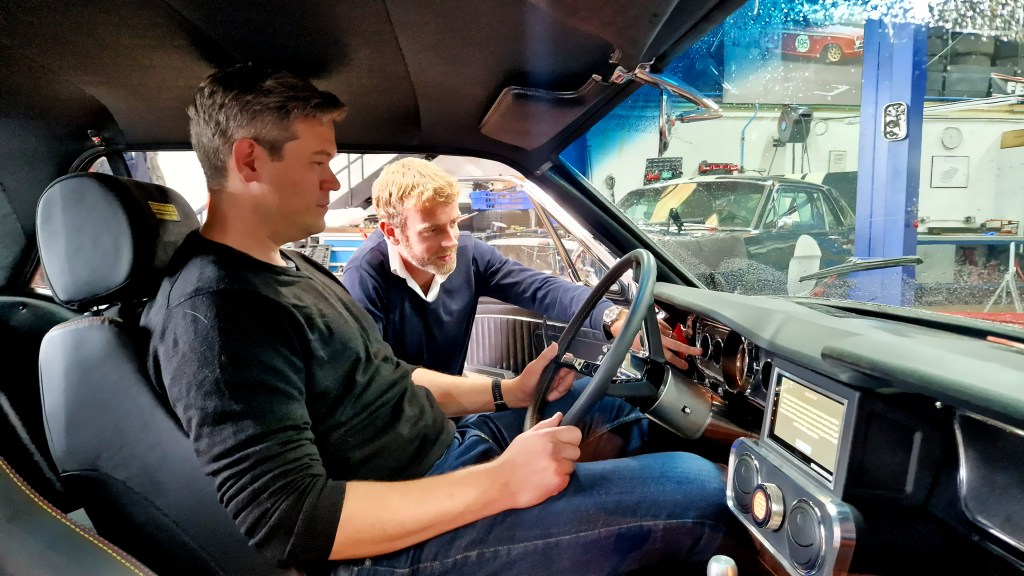
Once in, though, I was comfortable, with enough head room, and able to appreciate the rest of the interior. As is the way with restomods, it’s an intriguing amalgam of old and new, though AMR’s is one of the more successful applications.
Those unfamiliar with a 1960s Mustang’s instrument panel might think the ePower’s was completely original at first glance, featuring the dial speedometer introduced from 1965 (in place of the early horizontal speedo), flanked by a pair of further dials. The typeface is suitably period-looking, though rather than showing fuel levels and oil temperature, a closer inspection reveals they show voltage, charge level, battery temp and motor temp. All working accurately, as I discovered on the trip.
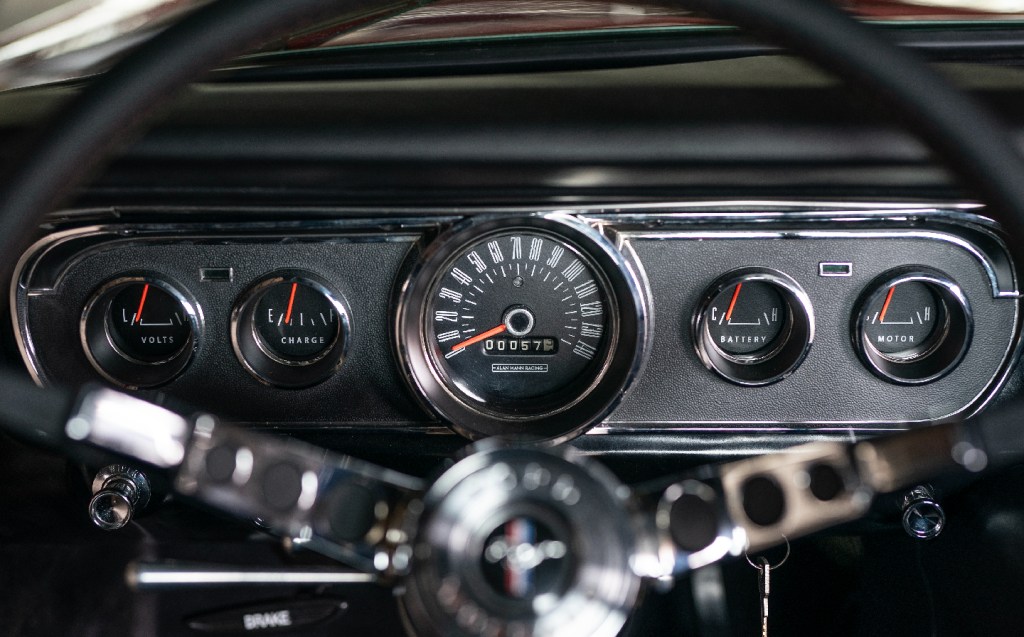
Unchanged are the controls for the wipers and lights by your left knee, and the ignition switch and cigarette lighter by the right. The handbrake, too, is as per the original car, and the pedals very much the same as you’d find on the automatic petrol models.
Glance to the right, though, and you notice the radically different centre console, with its pair of cupholders, a phone holder and a second handy storage tray below a pair of air vents and electronic dial control for the air conditioning system. Above that is the touchscreen — an off-the-shelf unit from Pioneer that runs Apple Carplay and Android Auto.



This last element is less successfully integrated with the cockpit than the rest, with its surround rather detracting from the rest of the well-executed retro-modern aesthetic. Perhaps the best decision made by AMR was to create a drive selector based on a gearlever from a Ford Cortina, and machined in-house complete with the inscription, “AMR 1964” — the year the firm was founded by Alan Mann himself.
Hittin’ the highway
To start, it’s as simple as turning the key, putting your foot on the brake and sliding the lever forward from Neutral into Drive (you pull back for Reverse). The initial eeriness of the silence (to AMR’s great credit, there’s no silly synthetic noisebox on the ePower Mustang) quickly gives way to a broad smile as the car stealthily creeps forward.
True, it lacks the sense of occasion of a rumbling V8 but there’s an understated confidence to this car, as if it doesn’t need to shout and scream because it knows it has the necessary performance chops to raise a smile.
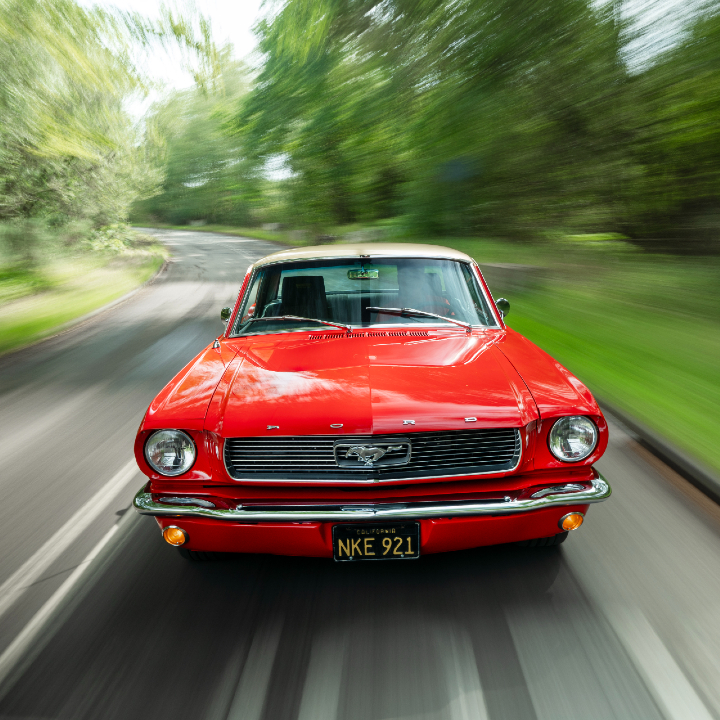
Given the fact that the AMR ePower Mustang prototype had been gutted of its petrol powertrain, and extensive modifications had been made to the suspension, of course out on the road this wasn’t going to feel much like the original machine.
That 1960s ‘stang was well received by the motoring press when it launched in 1964 — at least with its optional “handling package” — but you can’t deny it was decidedly crude by modern standards.
The first thing you notice about the ePower is the weight of its steering — turning out of the Alan Mann workshop was like opening the hatch door of a rusty submarine. Reviews of the original Mustang pointed out that its power assisted rack was fairly light, whether you went for the sportier package or not, but as the AMR ePower Mustang prototype I drove lacked assistance, I could feel every kilo of the car’s 1.4 tonnes when turning the wheel.
Asked if I thought it might benefit from power steering I couldn’t nod fast enough, and apparently I wasn’t the only one to give that feedback. Mann says AMR will add the system for future models, using readily available Mustang column-mounted units. That said, while still heavy the steering wasn’t unmanageable once up to speed. Beats going to the gym, anyway.
What was tricky to manage at any speed was the armfuls of lock required. Modern cars have clever steering systems with variable ratios that increase as the wheel is turned, allowing fine adjustments around the centre position but more rapid changes of direction when at speed. There’s none of that with the Mustang Mk.1, so sharp turns require constant turning of the wheel… and then furious unwinding as you come out the other side of the corner.
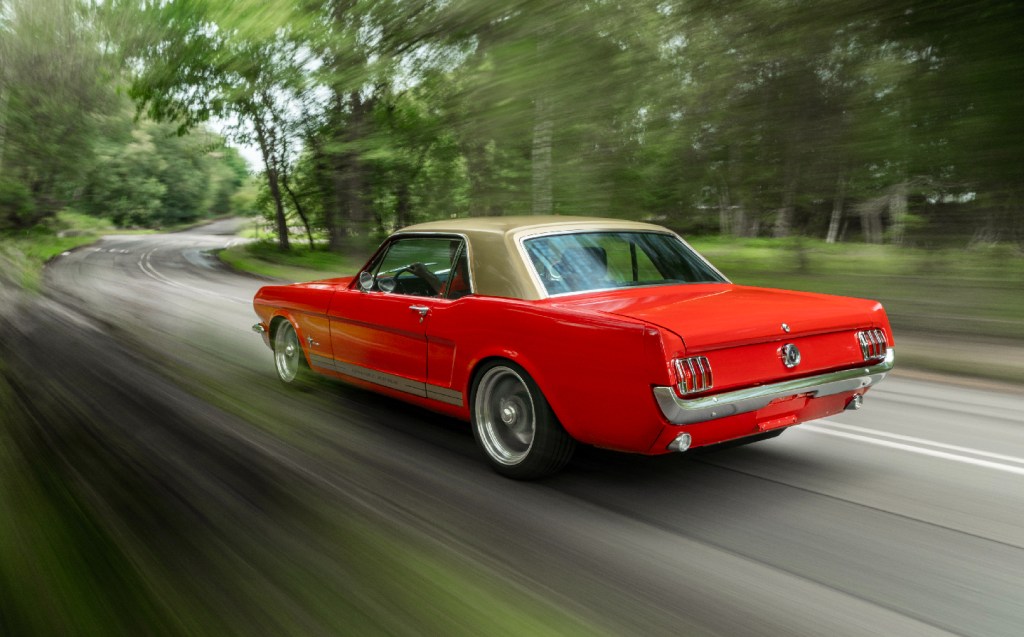
And the AMR ePower shares with its ancestor a very slow rack. The original car had two versions, offering either 4.5 or 3.5 turns lock to lock (depending on the handling package), and the steering in the AMR ePower feels similarly laborious. Combined with the long bonnet and deceptively generous wheelbase, low-speed 90-degree corners, for example into or out of side roads, can feel a bit like turning a narrow boat.
At a lick, things are more lively. Again, slightly exaggerated movements of the wheel are needed to keep the car following the ebb and flow of a B-road, but sharp movements are punished with what feels like feedback in the opposite direction, as if the front end is fighting you a little. Power steering might help eliminate this unwanted pendulum effect, or adjusting one of the settings at the front end (camber angle or anti-roll?), which is easily sorted by pros such as AMR.
There was also a shudder from the e-motor when pressed hard, from around 30mph, which Mann identified from the passenger seat and promised to investigate after the test drive — it’s not something he’d experienced before himself.
And while we’re on negatives, the ride quality felt overly harsh on potholed British roads… though may well suit less crumbling surfaces in, say, California.
It’s an education
Those points aside, driving the AMR ePower Mustang is a terrific experience. One of the selling points of the Mustang was its low-slung shape, and resulting low centre of gravity, which helped with stability, and this is carried over into the AMR ePower.
The balance is spot on, while a Torsen limited slip differential at the rear takes power from the front-mounted e-motor and feeds it to the back wheels, resulting in a car that feels like it wouldn’t be hard to catch if either end started sliding — something I decided to avoid attempting on wet public roads with the owner sitting next to me.
What was obvious was that the performance available is more than adequate. The headline figure is 300bhp, which gives it more power than even the high-performance version of the 4.7-litre V8 original that delivered 271bhp at 6,000rpm. While torque is down in the electric Mustang compared with that heady petrol powerplant, from 312 lb ft (at 3,100rpm) to 229 lb ft, it’s delivered evenly and immediately on demand, meaning eager acceleration and a very modern turn of speed.
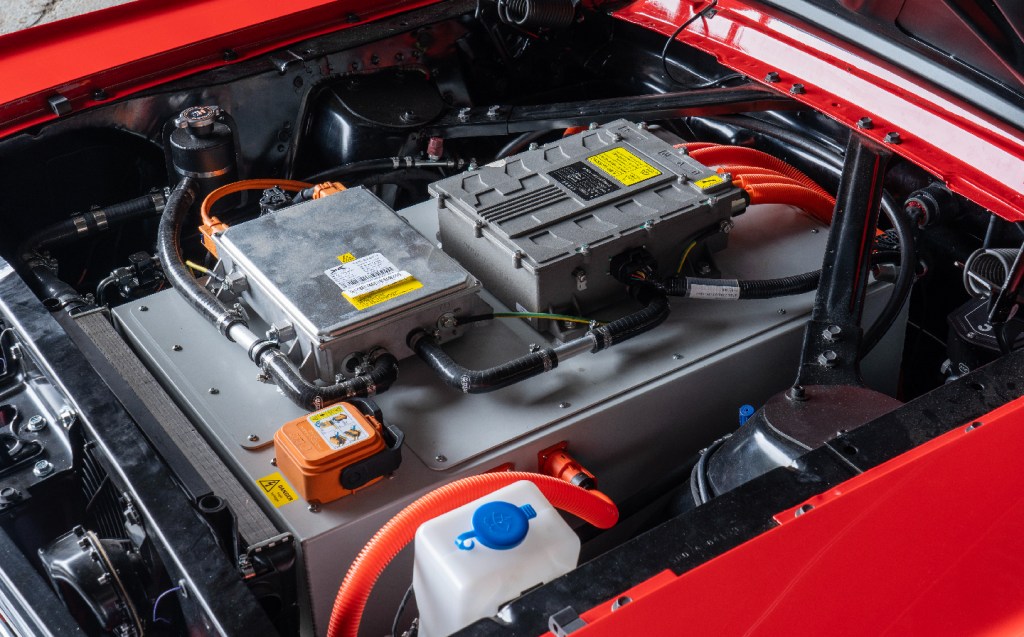
In fact, I reckon that with more time behind the wheel you could hustle this car along with relish. It’s certainly more composed than the original, and far less wayward than an electric conversion with original suspension components. I’ve driven some, and they’re… interesting.
As with all electric cars, how far you can drive the ePower Mustang before it needs to be plugged in will depend greatly on the weather conditions and what sort of driving you’re doing. Over a mix of roads, though, AMR claims a range of 200 miles, which exceeds that of the 1960s car on a tank of gas. When you do need to top up in a hurry, rapid DC charging is possible: a 20 to 80 per cent recharge takes 40 minutes.
Once you’ve settled down to a cruise on a longer journey, you begin to notice some finer details: the surprising lack of rattles and creaks, which a petrol motor would do a good job of hiding. Mann told me he worried the road and wind noise would be more noticeable, too, though surprisingly that doesn’t seem to be an issue with the ePower Mustang.
And while you have Google Maps and air con, which proved very handy for preventing fogging during our rainy test, things such as the wipers are delightfully old-school, activated by turning the switch left (slow) or right (fast) with a satisfying click.
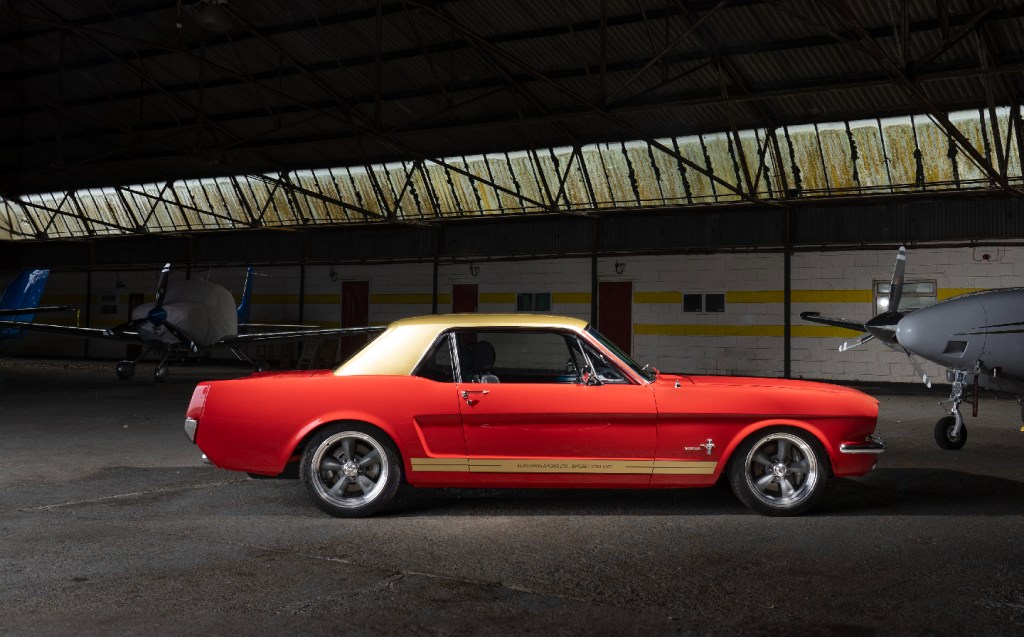
All things considered, if learning how to drive a classic car well over time — gelling with it — is part of its appeal, by removing the engine the ePower Mustang has lost very little. It’s just a different kind of education, and importantly this is an electric car with huge amounts of character, which isn’t to be sniffed at in the modern age.
The big question
Prices start at £200,000 (depending on whether you have a donor car and how much restoration work is required, plus local taxes and duties), which is hefty, no doubt. But consider the work that has already gone into its design and engineering, as well as the circa 1,000 hours of work required to complete the car. That price then seems reasonable — a bargain, even, compared to some other restomods out there.
The bigger question is why do it at all? If you’re the sort of enthusiast who has an answer for that, whether it be future-proofing, eliminating the question of “Will it start?” on a cold morning, or simply wanting something with the Alan Mann badge attached to it, then you might be sold. But if you’re part of the classic car community that can’t see any merit in electrification, then it doesn’t matter what I write — you ain’t biting.
But then again, those guys probably didn’t get past the headline. What they should take into account is that no-one is forcing anyone to do anything… at least not in the foreseeable future. Life’s too short to argue about such things, and in my view variety is the spice of life. I reckon Caitlyn Jenner would probably agree.
Related articles
- If you enjoyed this review of the Alan Mann Racing ePower Mustang, you might also like to check out our Healey by Caton review, and why this half-million-pound restomod is a little too authentic in its classic car experience
- Alfa GT restomod packs 493bhp twin-turbo V6 from Giulia Quadrifoglio
- Milivié 1 is a modernised VW Beetle restomod with a €570,000 price tag
Latest articles
- Omoda 5 prototype review: Bargain family SUV is solid first effort for new Chinese brand
- Dacia Duster 2024 review: Rugged, affordable SUV modernised with electrification and quite the glow up
- Audi A3 Sportback 2024 review: Softly, softly, catchy premium hatchback buyer
- New electric-only Mini Aceman fills gap between Mini Cooper hatch and Countryman SUV
- Tesla driver arrested on homicide charges after killing motorcyclist while using Autopilot
- Porsche Macan 2024 review: Sporty compact SUV goes electric, but is it still the class leader for handling?
- F1 2024 calendar and race reports: What time the next grand prix starts and what happened in the previous rounds
- Aston Martin DBX SUV gets the interior — and touchscreen — it always deserved
- Nissan unveils bold look for updated Qashqai, still made in UK


